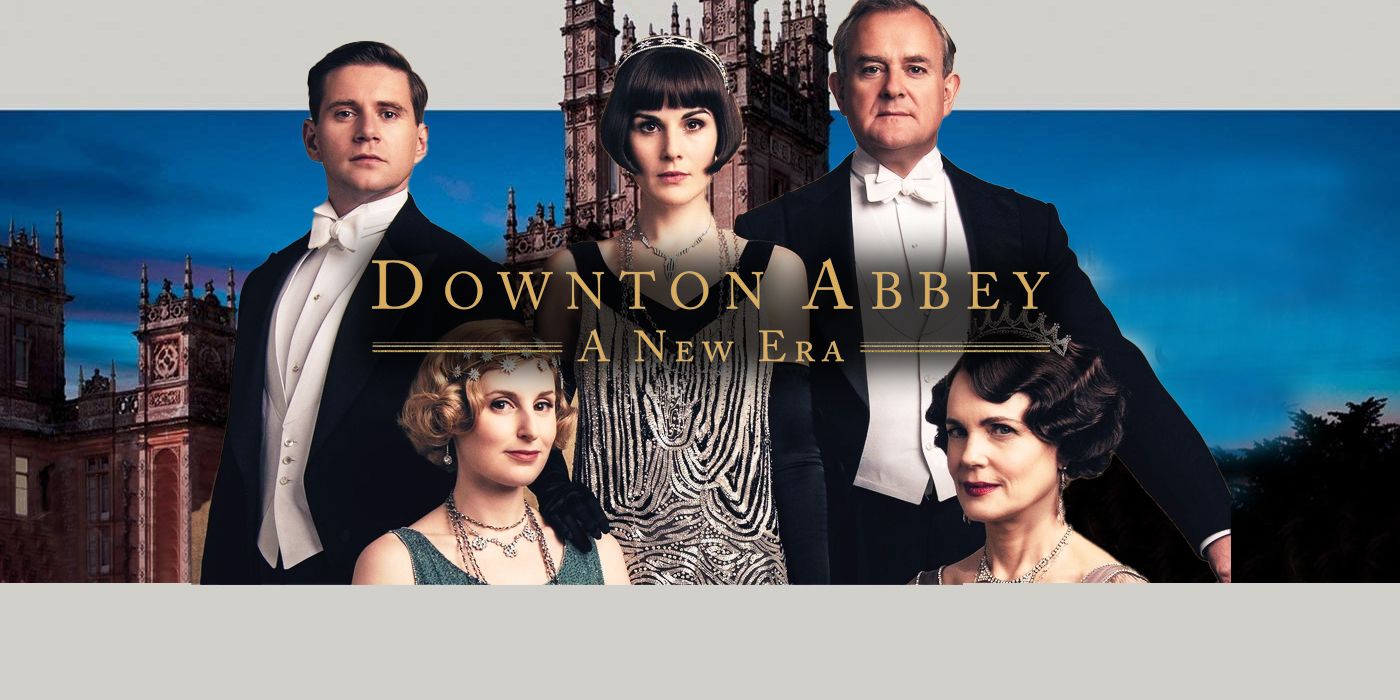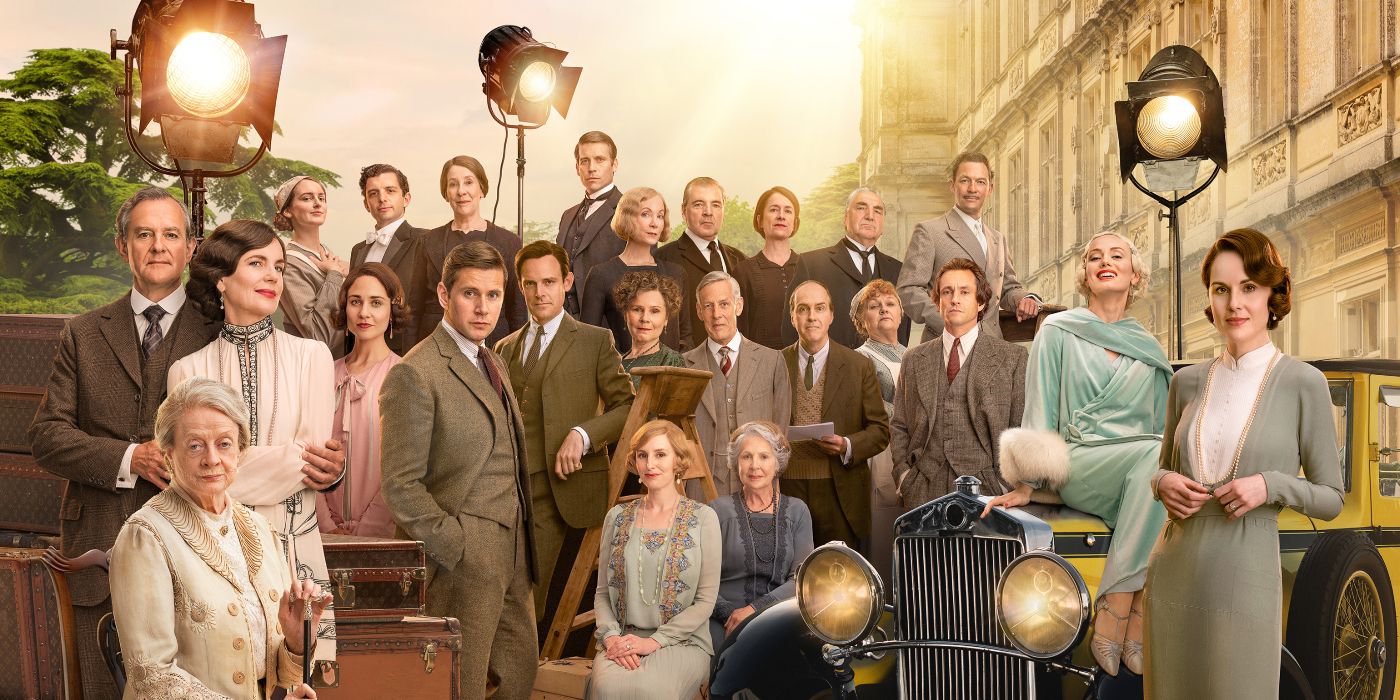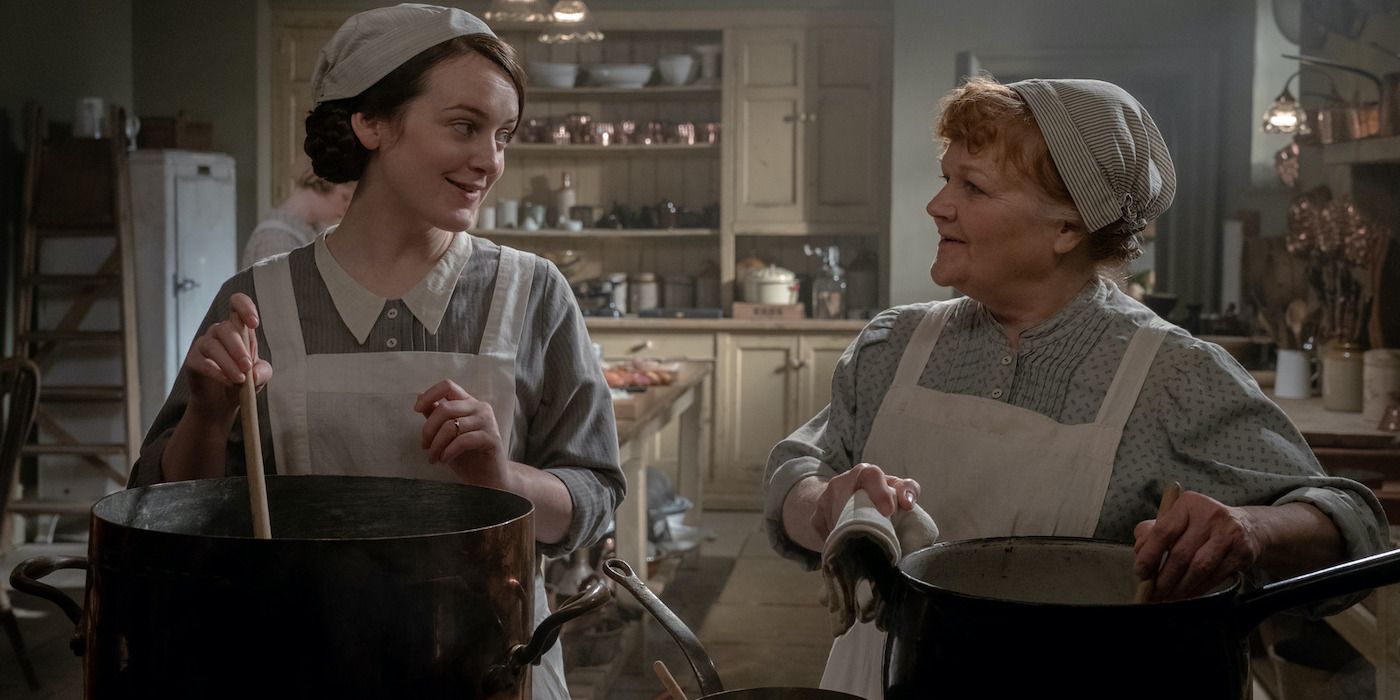Downton Abbey completely changed thanks to a car wreck. The first three seasons of Downton Abbey were a heartbreaking, often melancholic, and frequently nuanced take on unrequited love and the world moving away from the aristocracy. But with the death of Matthew Crawley (Dan Stevens) in a car crash at the end of Season Three, Downton Abbey shifted into focusing on the lighter side of its historical series, and while the show still had plenty of drama, mostly thanks to the frequently tragic stories of Bates (Brendan Coyle) and his wife Anna (Joanne Froggatt), Downton Abbey never quite nailed that balance of light, charming drama and love and loss again.
Especially with its series finale—which mostly attempted to give as many characters a happy ending as possible—and 2019’s Downton Abbey film, which primarily focused on the issues that arose due to a royal visit, it has become abundantly clear that Downton Abbey as a brand had become comfortable with stories that didn’t challenge itself too much, stories that were charming, yet mostly unsubstantial. But in the franchise’s second film, Downton Abbey: A New Era, the series finally returns to those early seasons with the Crawley family’s best story in almost a decade.
Downton Abbey: A New Era begins with that lighter touch, however, as we catch up with the cast at the wedding of Tom Branson (Allen Leech) and Lucy (Tuppence Middleton), who met in the first film. Soon after, the Crawley family discovers that Violet Crawley (Maggie Smith) inherited a villa in the south of France from a man she had a week-long romance with decades ago. Robert Crawley (Hugh Bonneville), Cora Crawley (Elizabeth McGovern), and a handful of others head to France to visit the palatial property and figure out why this strange man left this estate to Violet and not his own family.
Meanwhile back at home, a film crew has asked to film at Downton, a development that both excited and worries the family and workers at the house. Lady Mary (Michelle Dockery) oversees the production, alongside most of the Downton staff, which includes the film’s director Jack Barber (Hugh Dancy), the rude actress Mryna Dalgleish (Laura Haddock), and lead actor Guy Dexter (Dominic West). With film making the shift from silents to talkies, Mary and the Downton staff become extensively involved with the production as they attempt to help Barber and his crew in this cinematic leap.
The latter seasons of Downton Abbey and the first film mostly tended to let things happen around the cast, rather than have anything truly important happen to them. A visit from the royal family in Downton Abbey was fun, but the impact was minimal, a little tryst with almost no lingering importance in the life of the Crawleys. But A New Era takes amusing scenarios and bring heft to them, especially for the main family, who has often gotten lost amongst the various antics of these stories.
It has been quite some time since Robert and Cora Crawley have had much to do in this series, but with their trip to France, both get an opportunity to finally return to the spotlight. Similarly, Downton’s visit from Hollywood allows for more depth to the stories of the workers, whether through Molesley’s (Kevin Doyle) love for film and his unspoken love for Phyllis Baxter (Raquel Cassidy), Daisy (Sophe McShera) and her new husband Andrew (Michael Fox) trying to find peace in their new married life, and Barrow (Robert James-Collier) getting closer to one of the members of the film's crew.
But what makes A New Era one of the most effective Downton stories in years is that there isn’t a fear to go darker and make daring choices in the lives of this family. Director Simon Curtis (My Week with Marilyn, Woman in Gold) is a newcomer to this series, and doesn’t rely on the way things have been previously done with this franchise. Curtis gives the more tragic moments of the film room to breathe that allow the audience and the characters to absorb their impact, yet still manages to make the creation of the film and the more joyous moments of this story radiate. Written by the show’s creator, Julian Fellowes, A New Era is crafted like a writer who wants to give the audience what they want, but also wants to push the narrative forward—even if that might directly interfere with what that same audience wants. It’s a delicate balancing act that Fellowes nails here, and seems like Fellowes attempting to aim for larger stakes in a way he hasn’t for quite some time.
Downton Abbey has also frequently had a problem with putting the weight of its stories on the shoulders of new additions who show up, bring their own drama, then move on, without moving the needle much for the main cast. A New Era, however, also finds the right balance of this, introducing delightful characters into this world, but ensuring that their impact will have ripples in this story going forward. Through both the France and movie-making stories, we also get more depth about these characters that we’ve known for so long, whether it’s learning more about the perplexing past of Violet Crawley, Robert’s uncertainty about his lineage, or Mary’s look back at her life and loves. A New Era wisely knows that to have the biggest impact, Downton Abbey should primarily center the drama around these characters, and A New Era does so beautifully.
A New Era shows that Downton Abbey doesn’t have to sacrifice joy to also explore sorrow and pain. Amongst charming tales of Hollywood and French getaways, A New Era delves into loves lost, missed opportunities that leave its mark on our lives for years, and how one will be remembered long after they’re gone. Downton Abbey seems to have gotten stuck in its ways in recent years, but with A New Era, it shows that, well, we might be seeing a new era for Downton Abbey as well.
Rating: B+
Downton Abbey: A New Era comes to theaters on May 20.



